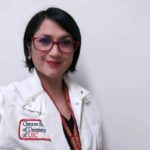In recent years, and especially during the COVID-19 pandemic, the landscape of higher education has undergone a significant transformation with the proliferation of online learning platforms and the increasing demand for flexible educational opportunities. In response to these changes, educational institutions must ensure that their online programs adhere to rigorous standards set forth by accrediting bodies and regulatory agencies. This blog focuses on the Orofacial Pain and Oral Medicine program at the Ostrow School of Dentistry, USC. It evaluates its compliance with both USC’s internal guidelines for distance education and the US Department of Education’s regulations for credit hours.
US Department of Education Standards/Regulations
The US Department of Education has established regulations to govern what constitutes a credit hour, regardless of the pedagogic approach (e.g., distance education or onsite education). These regulations emphasize the importance of “regular and substantive interaction” between instructors and students. In addition, there are eight required criteria for an educational program, shown in Table 1. These criteria are not satisfied easily, nor should they be. One of the more important criteria issued by the USDE is the one that specifies guidelines for higher education institutions regarding credit hours. According to USDE regulations, one credit hour typically represents one hour of classroom or direct faculty instruction and a minimum of two hours of out-of-class student work each week (Table 2) for approximately 15 weeks for one semester or trimester hour of credit.
The regulations related to credit hours can be found in Title 34 of the Code of Federal Regulations (CFR), Part 600 – Institutional Eligibility under the Higher Education Act of 1965, as amended (HEA). Within this section of the CFR, Subpart B – Certification Procedures for Eligibility and Certification Procedures for Participation in Federal Student Financial Assistance Programs, includes provisions related to the definition and calculation of credit hours. These regulations guide how higher education institutions should determine the appropriate number of credit hours for their courses, including the allocation of contact and non-contact hours.
Like what you’re learning? Download a brochure for our Orofacial Pain and Oral Medicine certificate or master’s degree program.
Table 1. Department of Education Criteria for University Programs and Courses
| Criteria | Compliance at Ostrow School of Dentistry |
| 1. University Curriculum Approval | All individual courses undergo approval by the School’s Curriculum Committee, USC Central’s curriculum committee, and the USC Provost’s office. |
| 2. Clear Grading Policy and Stated Objectives | Each course provides students with a syllabus outlining course objectives, learning outcomes, and a clear grading policy. |
| 3. Consistency with Department of Education’s Credit Hour Criteria | The program ensures that each credit hour entails at least one hour of direct faculty instruction and a minimum of two hours of out-of-class student work per week, aligning with Title 55002.5. |
| 4. Scope and Intensity of Courses | Courses are designed to require significant study outside of class, with assignments, research papers, weekly quizzes, and a final examination fostering critical thinking and deep conceptualization. |
| 5. Clarity on Prerequisites and Corequisites | All prerequisite and corequisite requirements are explicitly stated in course policies, providing students with clear guidance on course eligibility. |
| 6. Emphasis on College-Level Skills and Difficulty | Course difficulty is calibrated to demand college-level critical thinking and skill acquisition, as reviewed and approved by the School’s curriculum committee. |
| 7. Accurate Course Descriptions in the Catalog | All course descriptions accurately reflect course content and expectations, as approved by USC’s central curriculum committee. |
| 8. Qualified Instructors | All instructors undergo thorough evaluation before being hired and receive annual performance evaluations to maintain teaching quality. |
Table 2. Credit-hour according to USDE regulations.
| Course units | Contact hours | Non-contact hours | Total of hours of work per week |
| 0.5 | 1/2 | 1 | 1 1/2 |
| 1 | 1 | 2 | 3 hours |
| 2 | 2 | 4 | 6 hours |
Accreditation Agencies
The USDE grants the rights to accreditation educational programs to various agencies such as the Western Association of Schools and Colleges, the Middle States Commission on Higher Education (MSCHE), the Higher Learning Commission (HLC). All of these agencies usually follow the regulations set forth by the USDE. These agencies often ensure that institutions meet certain standards related to academic rigor and quality.
University Policies
Individual universities typically have their own policies and guidelines regarding credit hours. These policies may outline the requirements for credit hour calculation, including the allocation of contact and non-contact hours for different types of courses and instructional formats. Many universities provide faculty handbooks or guides that outline expectations for course design and instruction. These documents may include information on determining credit hours, designing course syllabi, and allocating contact and non-contact hours based on instructional goals and objectives. Finally, course catalogs and syllabi often provide detailed information about individual courses, including the number of credit hours, contact hours (i.e., time spent in direct instruction), and non-contact hours (i.e., time spent on independent study, assignments, etc.). These documents are typically available to students and faculty for reference.
USC Criteria for Distance Education
In addition to the eight USDE criteria in table 1, USC has developed its own set of four criteria for distance education, which specifies acceptable modes of interaction and instructional methodologies seen in table 3.
Table 3. USC Criteria for Ensuring Functional Equivalency in Online Courses
| Instructional Methodologies | Implementation at Ostrow School of Dentistry |
| 1. Implementation at Ostrow School of Dentistry | Asynchronous recorded lectures accommodate students’ diverse schedules and locations, ensuring flexibility while maintaining instructional quality. |
| 2. Recorded Lectures by Core Faculty | Core USC faculty primarily deliver recorded lectures, ensuring consistency and expertise in course content delivery. |
| 3. Faculty-Moderated Online Discussion Forums | Online discussion forums provide opportunities for student engagement and interaction, with faculty actively participating to stimulate academic discourse. |
| 4. Live Zoom Sessions | Live Zoom sessions supplement asynchronous learning, providing students with opportunities for real-time interaction with faculty and peers. |
The master’s degree program in Orofacial Pain and Oral Medicine at the Ostrow School of Dentistry, USC, exemplifies a commitment to meeting and exceeding USC’s internal standards and the US Department of Education’s regulations for online teaching. By ensuring regular and substantive interaction and providing the functional equivalent of direct instruction, the program maintains high-quality educational experiences for distance learners, fostering academic excellence and professional development in dentistry.
Earn an Online Postgraduate Degree in Orofacial Pain and Oral Medicine
Are you interested in a variety of issues focused on orofacial pain, medicine and sleep disorders? Consider enrolling in the Herman Ostrow School of Dentistry of USC’s online, competency-based certificate or master’s program in Orofacial Pain and Oral Medicine.
References
- Allen, I. E., & Seaman, J. (2016). Online report card: Tracking online education in the United States. Babson Survey Research Group.
- US Department of Education. (2020). Code of Federal Regulations, Title 34 – Education. Retrieved from https://www.govinfo.gov/app/details/CFR-2020-title34-vol3/CFR-2020-title34-vol3-part600
- Bates, A. W., & Poole, G. (2003). Effective teaching with technology in higher education: Foundations for success. John Wiley & Sons.
- Quality Matters. (n.d.). Quality Matters Higher Education Rubric, Sixth Edition. Retrieved from https://www.qualitymatters.org/qa-resources/rubric-standards/higher-ed-rubric
- Palloff, R. M., & Pratt, K. (2013). Lessons from the virtual classroom: The realities of online teaching. John Wiley & Sons.
- Simonson, M., Smaldino, S., & Zvacek, S. (2015). Teaching and learning at a distance: Foundations of distance education. Routledge.
- United States Department of Education. (2021). Accreditation in the United States. Retrieved from https://www.ed.gov/accreditation
- Moore, M. G., & Kearsley, G. (2011). Distance education: A systems view of online learning. Cengage Learning.


